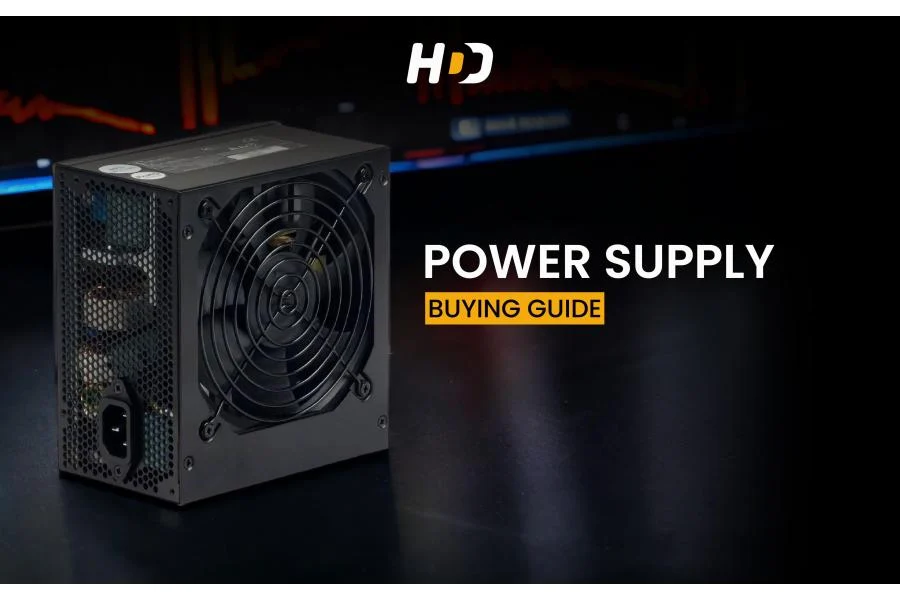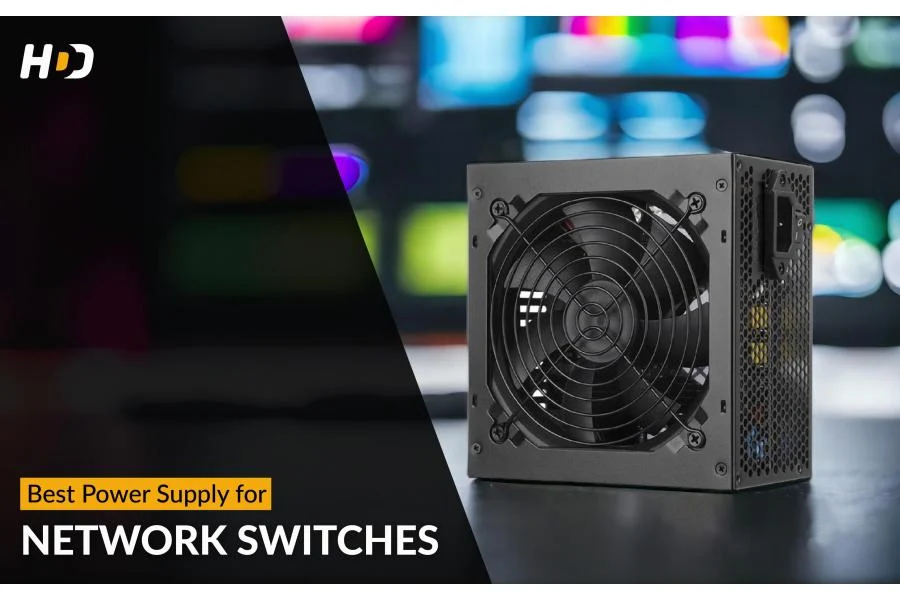A power supply is a vital electrical component that delivers electric power to an electrical load, such as a laptop, server, or other electronic devices. Its primary role is to transform electric current from a source into the appropriate voltage, current, and frequency to power the load, which can involve converting AC (alternating current) to DC (direct current) or DC to DC. Here's an overview of the components that comprise a power supply:
- Key Components: A power supply's essential parts include transformers (which adjust voltage), rectifiers (which convert AC to DC), filters (which stabilize voltage), and regulators (which ensure consistent voltage).
- Types of Power Supplies: Power supplies are mainly categorized into AC and DC types, along with specialized forms such as Uninterruptible Power Supplies (UPS) and Switched-Mode Power Supplies (SMPS).
- Performance Impact: The effectiveness and stability of a power supply have a direct bearing on the performance and lifespan of electronic devices.
Determining Power Requirements
The process of selecting the right power supply begins with understanding the device's power needs:
- Power Needs Assessment: Review the device's voltage, current, and wattage requirements, typically found on the device or in its manual.
- Matching Specifications: Choose a power supply that can consistently meet these requirements, especially under various load scenarios.
- Understanding Power Demands: It's important to know the distinction between maximum, continuous, and peak power demands to prevent overburdening the power supply.
- Maximum Power: Power supplies are distinguished by their "Maximum Power" output wattage, which helps users to determine the number and type of devices they can power. This feature is crucial in ensuring that the power supply can efficiently meet the energy demands of the connected components.
- Continuous and Peak Power: The "Maximum Power" usually signifies the continuous power, which is the steady output a power supply unit (PSU) can sustain. In contrast, peak power indicates the PSU's temporary surge capacity, such as 15 seconds, demonstrating its ability to manage short-term high-load situations.
Key Considerations:
When choosing a power supply, these features are essential:
- Voltage and Current Ratings: These ratings are vital in selecting a power supply, indicating the maximum voltage and current it can deliver. Matching these with your device's specifications is critical to avoid insufficient power or damage. For example, a device that needs 12V and 2A would be well-served by a power supply rated at 12V and 3A, ensuring adequate voltage with a sufficient current capacity.
- Efficiency Ratings: This percentage shows how well a power supply converts AC to DC. Higher efficiency leads to lower energy costs, reduced heat generation, and a positive environmental impact. An 80% efficient power supply, for example, translates 80% of the electrical input into usable power for the device, with the remaining 20% lost as heat.
- Modular vs. Non-Modular Cables: Modular power supplies offer customizable cable connections to reduce clutter and are ideal for personalized builds. Non-modular power supplies, on the other hand, have fixed cables and are more budget-friendly, though they may restrict airflow.
- Form Factor and Size: The form factor is critical in limited spaces, and it should match the device's housing requirements. Common types include:
- AC Power Supply: This converts AC from the wall outlet into the DC required by most electronic devices.
- Redundant Power Supply: Featuring two or more units within one PSU, this offers a backup in case one unit fails, ensuring uninterrupted power.
- Hot-Pluggable Power Supply: Designed for insertion or removal from a system without needing to power down, allowing for continuous operation.
- ATX Power Supply: Standard in most desktop computers, compatible with ATX motherboards, it offers various voltage rails for different components. The older AT form factor is now largely replaced by the ATX standard, which includes a +3.3V voltage rail, a 20-pin main power connector, and a software-controlled soft-off feature.
- ATX12V Form Factor: This has become the norm, evolving significantly over time. It began with a 4-pin +12V connector for the processor, later adding a 6-pin auxiliary connector and a 15-pin SATA power connector.
- EPS12V Form Factor: Originally designed for entry-level servers, it includes an 8-pin processor power connector alongside the 4-pin connector of ATX12V. It's increasingly used in high-end desktops for compatibility with EPS12V PSUs.
- DC Power Supply: Transforms electrical power into DC power, typically used where AC is unavailable.
- Hot-Swappable Power Supply: Similar to hot-pluggable, these can be changed without shutting down the system, ideal for critical systems where continuous operation is key.
- Internal Power Supply: Found inside the device's chassis, this is the most common type in personal computers and servers.
- External Power Supply: Positioned outside the main body of the device, often used in laptops, modems, and other compact electronics.
- Bronze Power Supply: Refers to the efficiency rating within the 80 PLUS certification, indicating a minimum of 82% efficiency under typical load conditions.
- High Voltage Power Supply: Designed to offer a higher output voltage, typically used in industrial and specialized electronics.
- Rack Mountable Power Supply: Suitable for rack-mounted servers and network equipment, designed for standardized racks in data centers and server rooms.
- Low Voltage Power Supply: Provides a lower output voltage, commonly used in low-power applications like small electronic devices and LED lighting.
- Non-PFC Power Supply: Without Power Factor Correction, generally less efficient and may produce more electrical noise and heat.
- Non-Redundant Power Supply: A single-unit PSU without backup, often used in less critical settings where a power failure is less consequential.
- PFC Power Supply: Featuring Power Factor Correction, it enhances efficiency and reduces power wastage.
- Plug-in Module Power Supply: Designed for tool-free installation and removal from a system, improving maintenance and upgradeability.
- SFF Power Supply: Small Form Factor power supply, used in mini-ITX and other small-sized cases, suitable for compact build environments. This category includes designs like SFX12V, CFX12V, LFX12V, and TFX12V, which are smaller than standard ATX12V units and are designed for corresponding SFF computer cases. They cater to compact or specialized build requirements.
- Noise Level and Cooling: Cooling, typically done with fans, is crucial in power supplies but can add noise. Options include quieter fans or fanless designs for noise-sensitive areas but may be more expensive.
- Safety and Protection Features: High-quality power supplies feature overvoltage, overcurrent, and short-circuit protection, safeguarding both the unit and connected devices.
- Connectors: The Main Power Connector links the motherboard and PSU. Common types include 20-pin and 24-pin, the latter introduced with ATX12V v2.0. Many modern motherboards use 24-pin connectors, though they often work with 20-pin supplies.
- 20+4-pin Connectors: Offer adaptability for compatibility with both 20-pin and 24-pin motherboards.
- Processor Power Connector: Also connects to the motherboard, powering the CPU. Options include 4-pin and 8-pin (EPS12V) connectors, with the 4-pin being standard and the 8-pin used in higher-end boards.
- Conversion Cables: Converters like 20-pin to 24-pin or 4-pin to 8-pin are available for compatibility with various motherboard formats.
- Other Power Connectors:
- 4-pin Molex Peripheral Connectors: Used for hard drives, optical drives, and some fans.
- SATA Connector: For SATA drives. Most PSUs include SATA connectors, and Molex to SATA power converters are available if required.
- Ensure Sufficient Connectors: Choose a PSU with enough connectors for all devices. Splitters can provide additional connections as needed.
- PFC (Power Factor Correction): PFC is a technique that improves the efficiency of power supply units by neutralizing reactive power. It enhances the power factor (PF), the ratio of active (useful) power to apparent (total) power, including reactive power. A higher PF indicates a more efficient conversion of current into useful power. While PF doesn't directly affect residential power bills, a higher PF reduces power waste, thereby boosting overall energy efficiency.
To learn more about the power supply's form factors please refer to Power Supply Form Factors Explained – Everything You Need to Know.
Types of Power Supplies:
Server Power Supply: Customized for server environments, these PSUs typically align with the EPS12V form factor, offering higher power outputs and superior reliability. Designed for the constant, heavy workloads typical in servers, they often feature redundant configurations for maximum uptime.
- PC Desktop Power Supply: Utilizing ATX12V or SFX12V form factors, these supplies are tailored for consumer use in desktop PCs. They balance efficiency, power output, and size for various desktop configurations, from standard office computers to advanced gaming systems.
- Switch Power Supply: Used in network switches, these supplies may utilize compact or custom form factors to fit the switch casing. They are engineered to provide steady, reliable power for efficient data traffic management over networks.
- Router Power Supply: Powers network routers, typically external units that are compact and efficient, offering the necessary power for continuous network connectivity and data routing. They usually have lower power outputs than PC or server PSUs, as routers require less power.
- Printer Power Supply: Designed for printers, these supplies can handle the varying loads from the printer's mechanical parts. Often internal, they are tailored to the printer's form factor, providing stable power for both the printing mechanism and electronic controls.
- Laptop Power Supply: These external units are characterized by their portability and lower power output compared to desktop PSUs. They are lightweight and compact, designed specifically for charging and operating laptops according to particular voltage and current requirements.
To learn more about the power supply and its types refer to Power Supply Overview, Top Power Supply for Data Center Servers and Best Power Supply for Network Switches.
Conclusion:
Choosing a power supply involves more than just wattage. By considering critical features such as voltage and current ratings, efficiency, cabling, form factor, noise and cooling, and safety, users should select a power supply that meets their requirements for performance, reliability, and safety.


.jpg)


